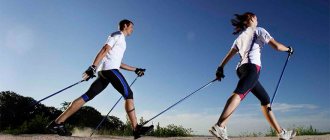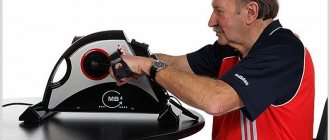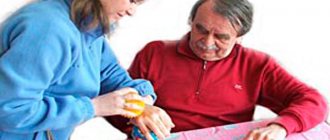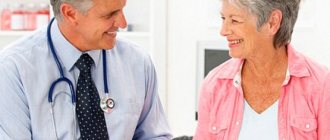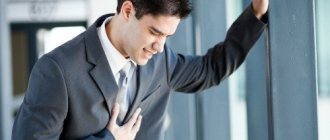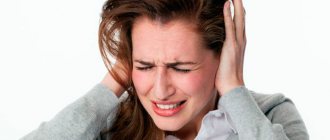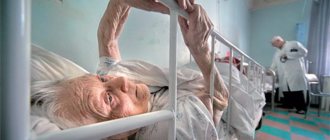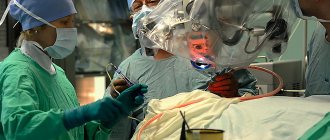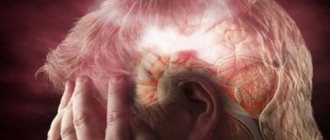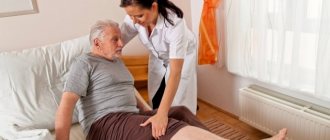The importance of exercise therapy after a stroke in rehabilitation
A set of physical exercises specially selected by a specialist with a medical education is called exercise therapy (physical therapy). The measure aimed at the rehabilitation of ischemic or hemorrhagic stroke takes into account the severity of the lesion, the stage of recovery, and the patient’s well-being.
Physiotherapy refers to a whole section of the medical field, where methods of restoring health through physical activity are studied and implemented. Motor exercises are prescribed for everyday practice in medical institutions, which can be carried out, including at home, after a stroke.
Beginning moderate physical activity 3 days after an attack increases the chances of recovery. Special exercises for the recovery of a patient after a stroke are prescribed only by a doctor who has received a diploma from the Faculty of Medicine.
Components of exercise therapy after stroke for stroke patients:
- mechanical movements;
- passive influence (massage);
- physiotherapy;
- occupational therapy.
The purpose of performing therapeutic physical exercises is to improve neural connections, accelerate tissue regeneration, improve blood flow, lymph outflow, and tone atrophied muscles. Physiotherapy exercises are practiced not only for restorative rehabilitation, but also for the prevention of diseases.
When to start exercising after a stroke?
Stroke affects the body in different ways. If consciousness is not lost and the patient is not in a coma, then breathing exercises, which are indicated for 3-4 days after the attack, are of great importance. It is important that during the rehabilitation period, relatives and friends provide all possible support. Restoring a home is not complete without the help of doctors and drug treatment. Extended physiotherapy is prescribed:
- acupuncture,
- electronography,
- massage,
- occupational therapy,
- magnetotherapy,
- pulsed electrical stimulation,
- oxygen therapy.
When performing physical therapy, it is important that the patient is comfortable. If a person develops weakness, headache, or blood pressure fluctuations, then the pace of procedures needs to be slowed down.
The benefits and effects of charging at home
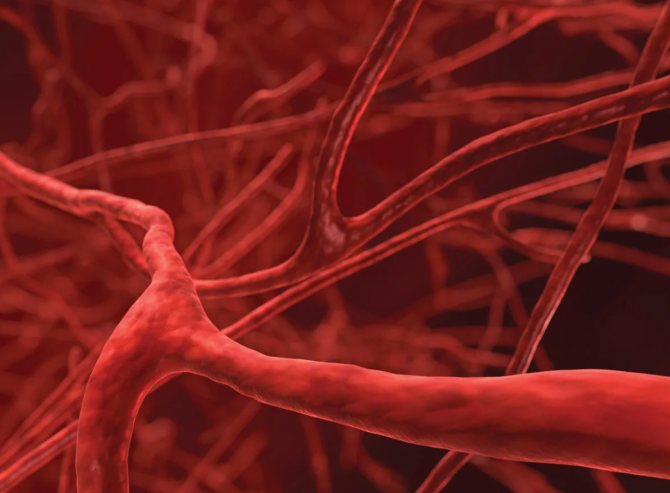
The effectiveness of special physical exercises depends on the regularity of the exercise. Gymnastics after a stroke should be done daily for positive dynamics to appear.
Only with daily practice of performing the exercise therapy complex:
- blood supply to tissues and organs improves, including in the affected area due to the normalization of the cardiovascular system;
- metabolic processes occur more intensively, due to faster transport of oxygen during intense breathing;
- lymph flow will accelerate;
- muscle memory is restored;
- muscle spasms and tone are eliminated;
- the patient’s mood and emotional sensations improve;
- no bedsores or atrophic changes are formed.
Repeated repetition of simple exercises with increasing load restores reflex connections and promotes cell renewal.
Physical therapy for strokes part 2 – 8 simple exercises to restore health
Exercise therapy for strokes
Stroke is an acute disorder of cerebral circulation of various locations. The first mention of stroke was made by Hippocrates in the 460s. years BC e., which speaks of a case of loss of consciousness as a result of brain disease. Galen later described symptoms that begin with a sudden loss of consciousness, and designated them with the term “stroke.”
How serious is the problem of stroke?
Rudolf Virchow made a significant contribution to the understanding of the pathogenesis of stroke. He proposed the terms “thrombosis” and “embolism”, which are still used today. And he also established that arterial thrombosis is caused by fatty degeneration of the vascular wall, and associated it with atherosclerosis.
According to the World Health Organization (WHO), the mortality rate from strokes is 10–15%, which is the 3rd place after cardiovascular diseases and cancer. Approximately 60% of people who have suffered an acute cerebrovascular accident (ACVA) remain completely disabled. About 20–25% return to work.
In the first months, the chances of restoring lost functions after a stroke are highest. Speech recovery occurs very slowly. Or maybe you won’t recover at all. Many who have suffered a stroke have problems with speech, understanding, and decision making. Patients' behavior changes, which often causes difficulties in communication.
Long-term complications after a stroke, such as depression or pneumonia, occur in the first days or months after the blood circulation in the brain is disrupted.
A stroke leaves dead nerve cells in the brain. The degree of dysfunction depends on where they are located. The dead cells are surrounded by temporarily inactivated ones, which is why they seem to be inhibited. There are cells in the brain that can take over the functions of the dead. You can start the process and teach them to work with the help of exercises. There are methods of recovery after a stroke through exercise therapy.
In most cases, the development of a stroke leads to serious consequences. The main ones are:
- Speech disorders;
- Loss of vision and hearing;
- Memory problems;
- Mental disorders;
- Tremor;
- Facial asymmetry;
- Paralysis;
- Sudden death.
The consequences of a stroke depend on the amount of damage. Symptoms in severe cases include loss of consciousness, impaired cardiac function, breathing, and motor dysfunction (flaccid paralysis and muscle paresis). Affected may be one limb (monoplegia - monoparesis), two on one side hemiplegia - miparesis), three (triplegia - triparesis), four (tetraplegia - tetraparesis) and two upper or two lower limbs (paraplegia - paraparesis).
What types of stroke are there?
There are two types of stroke: hemorrhagic (1-4%) and ischemic (96-99%).
Ischemic stroke occurs due to blockage (thrombosis) of cerebral vessels by an atherosclerotic plaque or thrombus. In the area of the brain that is supplied by the thrombosed vessel, persistent ischemia develops. As a result, nerve cells die. The brain tissue softens, collapses, decay products are absorbed, causing cysts to appear.
The cause of hemorrhagic stroke is bleeding in the brain as a consequence of hypertension, atherosclerosis of cerebral vessels. The walls of the blood vessel rupture and blood enters the brain, destroying it.
When oxygen starvation lasts more than 4 minutes, brain cells are damaged and die. The part of the body controlled by nerve cells loses function.
Cerebral circulation disorders as a result of hemorrhagic or ischemic stroke cause paresis or central (pastic) paralysis on the side opposite to the lesion (hemiplegia, hemiparesis), sensory disturbances, and reflexes. Often, patients after a stroke experience friendly movements in paralyzed limbs - synkinesis. They arise due to increased excitability of the segmental apparatus of the spinal cord and the involvement of motor neurons of the paralyzed side in motor actions. Occur when a person performs movements with a healthy limb.
Physical therapy for strokes
Objectives of exercise therapy for strokes:
- restore movement function;
- counteract the formation of contractures;
- reduce increased muscle tone and reduce the severity of friendly movements;
- help strengthen the body.
The doctor prescribes exercise therapy from the 2-5th day from the onset of the disease, when the signs of a coma have disappeared. When choosing a therapeutic exercise technique, the patient’s clinical data and the time elapsed since the stroke are taken into account. There are 3 periods after a stroke.
- Early recovery period - up to 3. months;
- Late recovery period - up to a year;
- The period of residual motor dysfunction.
In each period, a complex of physical therapy appropriate to the stage of recovery is used.
Early recovery period
Lasts up to 2-3 months. This is the acute period of a stroke. Initially, complete flaccid paralysis develops, which after 1–2 weeks. gradually gives way to spasticity and contractures begin to form in the arm flexors and leg extensors.
Objectives of exercise therapy during this period: The initial course of physical therapy for stroke includes passive movements of the affected limbs, as well as massage. Necessary for the prevention of pathological conditions (increased muscle tone and contractures, pain in the joints of the extremities, trophic disorders of bedsores).
First, do exercises for a healthy part of the body. General strengthening exercises are alternated with special ones. The complex is performed slowly, the movements are smooth. You need to exercise regularly, gradually increasing the load. A positive attitude is important, then physical therapy classes will be effective.
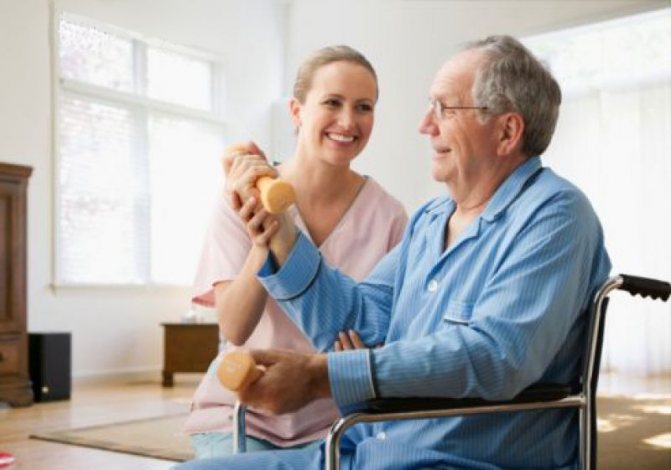
A few days after the stroke, positional therapy is used. Necessary to prevent the development of spastic contractures or eliminate or reduce existing ones. If the patient has complaints, the position is changed immediately. Treatment is carried out every 1.5-2 hours a day. At this stage, classes are held lying on your back.
Exercise therapy is used to prevent joint stiffness. Flaccid paralysis, 2 weeks after the stroke, changes to spastic paralysis. As a result of increased tone, irreversible changes occur in the joints on the affected side. This leads to limited movement.
Performed after treatment of a position when muscle tone weakens. Classes begin with active exercises for a healthy limb, which the patient performs himself. They include all types of movements in a specific joint: flexion and extension, abduction and adduction, rotation. Then they move to the sore side, the movements in the joints of which are performed by a physical therapy instructor. Passive exercises against stroke begin with the knuckles, gradually moving up.
And the complex also includes breathing exercises to restore proper breathing. Start with 2–3 days of treatment. They consist of a controlled change in the pace and depth of inhalation and exhalation, following the commands of the exercise therapy instructor. This includes rhythmic breathing under counting, exercises to reduce the frequency of respiratory movements, changing the type of breathing from chest to abdominal and vice versa.
It is important to prevent bedsores and pay special attention to the functioning of the intestines and bladder.
Late recovery period
The objectives are:
- improvement of the functional state of the central nervous system, cardiovascular system and respiratory system;
- increasing the general emotional tone of patients;
- prevention and treatment of contractures;
- restoration of temporarily lost motor functions, development of self-care and walking skills.
The patient is in hospital. The doctor prescribes a course of therapeutic exercises. The exercises are performed in a supine position, on the healthy side.
In exercise therapy for strokes they use:
- passive exercises for paretic limbs;
- exercises with the help of an instructor in lightweight IP;
- holding individual parts of the limb in
- a certain position;
- active exercises for paretic and healthy limbs;
- relaxation exercises;
- breathing exercises, changing position during bed rest.
A patient in a hospital room is being prepared to get up while still in bed. This is an active and passive imitation of walking, a gradual transition to a vertical position.
If you have an ischemic stroke, you can sit after 7–14 days. For hemorrhagic – after 4–5 weeks. At first, the landing angle is 30-40, gradually increasing to 90°. Later, a sitting position with legs down is allowed for no more than 15 minutes. Next, the patient gets up and walks around the ward on crutches with the help of a methodologist. Then they are taught to walk up the stairs.
As part of exercise therapy for strokes, the following is added to facilitated movements:
- exercises with a gymnastic stick using a healthy hand;
- for the body - turns, slight bends forward, backward, to the sides;
- provide training in household skills (dressing, undressing, eating).
The period of residual motor dysfunction. Objectives: combating muscle spasticity, joint pain, contractures.
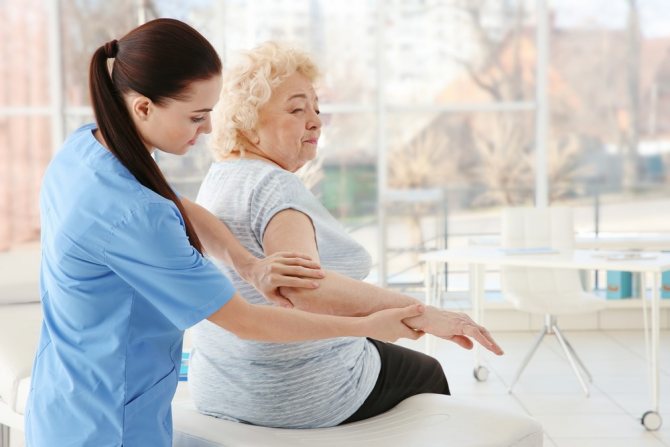
A distinctive feature of exercise therapy in this period is the inclusion of exercises to overcome resistance. To obtain and consolidate the result, it is important to perform the complex correctly. Massage also helps to form normal muscle tone and speed up the recovery of motor functions. To obtain a lasting result, you need 10-20 sessions per year.
A set of such measures helps:
- reduce muscle spasticity, joint pain, contractures;
- improve motor functions, self-care abilities, and labor.
Exercise therapy for strokes can be combined with balneophysiotherapy, drug treatment, and massage. The patient needs to continuously perform exercise therapy prescribed by the doctor at home.
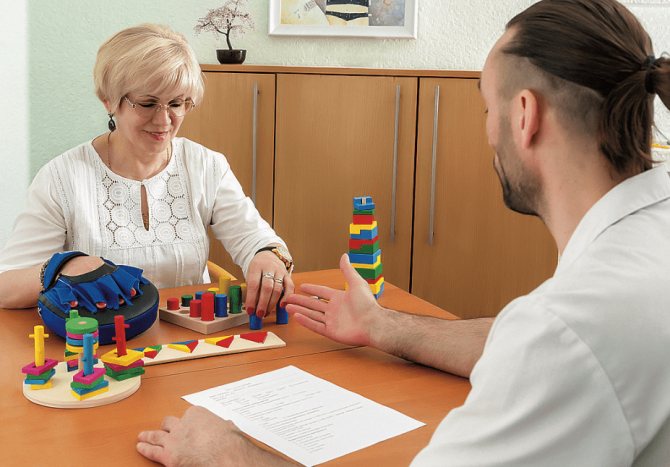
In addition to the complex of physical therapy for strokes, it is also important to change your lifestyle - quit smoking, preferably eliminate alcohol. Eat less fatty, sweet, and overly salty foods. Include physical activity daily. For elderly patients, do “mental exercises.” This includes solving crossword puzzles, memorizing poetry, writing memoirs, weaving, knitting.
Source – “Neurological Clinic of Doctor Yatsenko”
Preparatory activities

Therapeutic exercises after a stroke require preliminary preparation and examination of the patient. A complex of exercise therapy can be carried out only if the patient feels satisfactorily and his condition does not cause concern.
Preparatory procedures:
- inspection;
- survey if possible;
- measurement of pulse and blood pressure;
- body massage;
- breathing exercises;
- passive exercises.
Rehabilitation after a stroke is carried out with normal parameters of systolic and diastolic pressure. Normally, indicators should be in the range of 110-130/70-90 mm. Hg.st. If you have suffered a hemorrhagic stroke, the upper limit should not be higher than 108/105 mm. rt. Art.
Indications
Physical exercise after a stroke significantly increases the chances of a full recovery. The sooner the exercise therapy complex is started, the more intense and active the rehabilitation process will be.
Exercises for a patient who has suffered an acute cerebrovascular accident are done for any severity of the disease. If the condition is stable, it is important to start regular gymnastics exercises. Lack of mobility after a stroke provokes:
- gradual loss of vital functions;
- congestion in the lungs, kidneys, and circulatory system;
- loss of motor ability and mobility of joints;
- muscle tissue atrophy;
- the appearance of bedsores.
Performing a complex of physical therapy exercises has an important psychological component. Patients with stroke experience anxiety, a depressed and negative state, apathy, and helplessness. Movement promotes the production of serotonin and norepinephrine. Success and the return of familiar sensations contribute to recovery.
Interesting! The first knowledge and developments of exercise therapy appeared only in the middle of the 20th century.
If possible, you should be instructed by your attending physician. The specialist will show the patient and accompanying relative how to perform movements, safely increase the load, and avoid complications. Every day the duration of classes should be at least 60 minutes.
Exercises to eliminate the consequences of a stroke
Immediately after a stroke in the first days, the patient is given complete rest; gymnastics is possible, but exclusively passive. It consists in the fact that other people perform gymnastic exercises for the patient, bending and straightening his limbs. Passive physical therapy begins with the fingers, first the paralyzed hand, then the healthy one.
Afterwards they switch to rotating the hand, movements should be carried out in both directions (clockwise and counterclockwise). Then they bend and straighten their arms at the elbows, and at the end they move to the shoulders, perform movements up and down, left and right, and make rotational movements. Passive gymnastics for the lower extremities follows the same principle.
To eliminate muscle spasms, you can fix them for a short time in an extended state. The hand or fingers can be tied to a stick, securing them in an extended position; this is done with other parts of the body. Fixation can be performed for no more than 30 minutes a day, provided that the patient does not experience discomfort.
The patient himself performs “mental” gymnastics. These exercises speed up the recovery of the motor center. All you need is to mentally imagine such gymnastics. Imagining how he squeezes and unclenches his palm, the patient forms a new motor center in his head. It is important to clearly imagine the picture and visualize it as often as possible. You need to believe that everything will work out.
- A cloth (towel) is hung over the bed. A person grabs it with his hand and develops his arm independently, bends and unbends, raises and lowers. The fabric is gradually hung higher, complicating the training process and stimulating the recovery process.
- The next device is a rubber ring with a diameter of 40 cm. The ring is placed between the limbs, the person’s task is to stretch it. The ring for this purpose is made of medium thickness, so that spreading the limbs apart is quite simple and difficult at the same time.
- The patient, with a smooth movement, grabs the headboard of the bed and tries to pull himself up or push away from it. It is useful to involve your legs in this process.
- The patient sits on the bed, lowers his legs to the floor, and holds onto the bed with his hands. The task is to bend your back, sticking out your chest. Bend as you inhale, relax as you exhale.
- The patient sits on the bed, legs also lie on the bed. The task is to raise straight legs, one by one, first one leg, then raise the second.
- Another exercise in the same position. To relax your back, place a pillow under it. The task is to reach your chest with your knee, clasping your leg with your hands. Raise your leg while inhaling, hold the movement and breath at your chest for a couple of seconds. Do it alternately for each leg.
- A person sits on the bed, legs rest here, arms are pulled back, palms rest on the bed. The task is to inhale and try to connect the shoulder blades with each other. At the same time, tilt your head back.
- Lift a small object (a box of matches, a pencil) from the table; after successful completion, you can lift the object from the floor.
- Raise your arms up and stretch, standing on your toes. Do the exercise while inhaling, relax while exhaling.
- Feet shoulder-width apart, palms on waist. Tilts forward and backward and left and right.
- Stand up straight, stretch your arms forward, exercise “scissors” for your hands.
- Place your feet together and squat, trying to maintain a straight posture and not lift your heels off the floor.
- Place your feet shoulder-width apart, hands on your waist, rotate your torso clockwise and counterclockwise.
- Walking while standing still.
- Swing your leg, clapping your hands underneath it.
READ MORE: Recognize a possible stroke in time - prerequisites and warning signs of a stroke
Contraindications
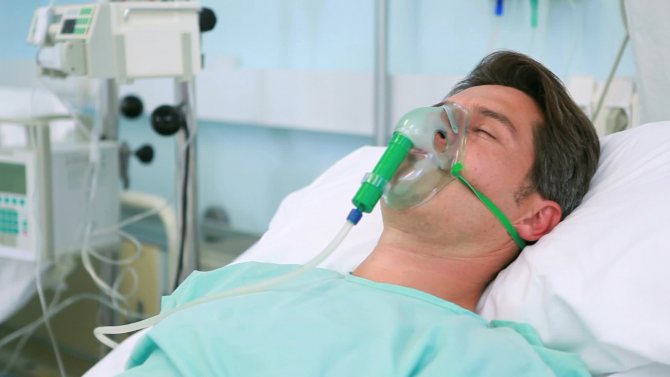
Therapeutic exercises after a stroke are carried out after analyzing the patient’s condition and consulting with the supervising doctor.
Contraindications to exercise therapy are:
- coma;
- epilepsy in the acute stage;
- mental disorders;
- malignant tumors;
- tuberculosis;
- diabetes.
It is important to assess the patient’s condition after the procedures. If negative dynamics occur and health deteriorates, the exercise therapy complex is stopped until consultation with a doctor and adjustment of measures.
Passive loads
Exercises after a stroke at home begin with passive gymnastics. The patient should not make any personal efforts so as not to cause increased blood flow and an increase in the number of contractions of the heart muscle.
Passive exposure is carried out by a specialist in a medical institution or a relative of the patient in the absence of the opportunity to receive qualified assistance. Activities are carried out in the following sequence:
- careful change of body position;
- manipulative light stroking of immobilized muscles;
- rubbing with light pressure and kneading healthy parts
For immobile patients who are lying down, massage is performed to improve blood circulation while monitoring respiratory function. Massage with light movements and rubbing, starting from large articular joints and moving to the fingers of the limbs.
A set of exercises after a stroke
When recovering from a stroke at home, not only physical therapy is important. Relatives of the patient who are involved in rehabilitation must follow several rules:
- begin rehabilitation from the first days of hospital stay and continue at home until lost functions are restored;
- perform exercises regularly, since only systematicity will help achieve good results;
- carry out recovery in stages, without changing the stages of rehabilitation;
- lost functions are restored in parallel, including speech, memory, movements;
- ensure constant monitoring of the patient by a neurologist and rehabilitation specialist, since only they can monitor the effectiveness of rehabilitation.
For the torso
The main goal of performing these exercises at home is to reduce the risk of falls. This is achieved by improving balance and stability of body position. Rules:
- The exercises in this group are suitable for performing at the stage when physical therapy is permitted.
- At this stage, the patient should already carry out any movements himself.
- The first few days it is better to do each exercise 1-2 approaches. Then it is allowed to increase their number to 3-4.
Changing the position of the limbs
When a patient with paralysis remains in one position for a long time, stagnation occurs in the blood vessels and lymph flows, and contractures form in the joints. If the muscles of the limbs are in a state of spasm, the processes occur even faster. For early rehabilitation, relatives can help restore the health of a bedridden patient in the following ways:
- while lying on your back, place rolls of rolled towels or sandbags under the affected arm or leg, thereby ensuring the normal position of the limbs;
- periodically place an arm or leg for 5-7 minutes in a position that would be uncomfortable for a patient lying on his back if he retained sensitivity or mobility. For example, move your arm to the side and place it on a flat horizontal surface, turn it at an angle, bend it at the elbow and leave it in that position. After time has passed, return the limbs to their original position;
- burden the spasming muscles of a person lying on his back, straightening his limbs, using sandbags. For example, move the patient's affected left arm to the side, placing it on a flat horizontal surface. Extend it in all joints, including your fingers. Place weights on your open palm and elbow joint. Leave for 3-5 minutes.
The more often the diseased limbs take a position uncharacteristic of their natural posture, the more signals the brain receives from the muscles.
The effectiveness of exercise therapy is facilitated by the participation of the patient himself. The patient is instructed that with each movement he must silently or out loud voice a description of the exercise. For example, “I lift my leg up” or “I clench the fingers of my right hand.” Mental memory combined with conscious execution of a task shows the best results with regular practice.
Recommended sets of exercises for recovery at home
After a stroke attack, it is necessary to train all parts of the body, but exercise therapy after a stroke is selected so that maximum correction of possible movement disorders occurs.
READ MORE: How to remove a mole at home
Balance and coordination exercises are necessary for people who have difficulty maintaining an upright position while walking.
Exercise therapy for stroke for balance consists of relatively simple movements:
- Standing, rest your hands on the back of the chair. Stand on 1 leg for half a minute, then change limbs. Gradually, the duration of standing should be increased to 2 minutes and not use your hands to maintain balance.
- The following coordination exercises will be a more complicated version of the previous movement - you need to not only raise your leg, but also move it to the side, holding the raised limb for a couple of seconds, then slowly lower it to the floor.
- Walking along one line. You need to walk, placing the heel of your right foot close to the toe of your left.
At first, relatives help you do exercises to restore balance, and then the person begins to train on his own.
Facial exercises after a stroke are necessary when paresis of the facial muscles persists and articulation is impaired.
In case of facial deformation due to paresis, it is recommended:
- alternately frown and raise your eyebrows;
- puff out one's cheeks;
- smile.
A useful exercise for the facial muscles is to make faces in front of the mirror, trying to make the halves of the face look the same.
Almost always, a violation of facial expressions is accompanied by difficulty in articulation. Then a set of exercises for the tongue and lips will help:
- move your tongue over your lips;
- grin, showing teeth;
- stick out your tongue, trying to touch your chin;
- fold your lips into a tube.
Such rehabilitation at home will not only allow you to restore facial expressions, but also get rid of slurred speech.
Gymnastics for the eyes
Paresis of the oculomotor nerve makes it difficult to focus the gaze and causes double vision. To eliminate this, you will need a special complex of exercise therapy:
- focus your gaze on one point and blink at regular intervals;
- change the direction of gaze first from right to left, and then from top to bottom;
- rotate the pupils first clockwise and then counterclockwise;
- close your eyes, squeezing your eyelids tightly for a few seconds, and then slowly open your eyes.
An important rule: eye exercises should not overwork the organ of vision. Eye exercises after a stroke are performed slowly, with a small number of repetitions, but the movements must be done 3-4 times a day. This will help restore the functionality of the extraocular muscles and nerves.
Rehabilitation exercises after a stroke necessarily contain exercises for the core. This is necessary to build up a natural muscle corset that makes it easier to maintain balance:
- Body rotations. It is necessary to turn the body in the lumbar region to the right and left. First, physical therapy is performed while sitting on a chair, and then, as the muscles strengthen, turns are done while standing.
- Tilts to the side. The situation is similar to that described above. You need to lower your left shoulder and bend slightly to the left, then straighten up and repeat on the other side.
- Bend forward. Raise your hands up and clasp them together. Slowly lean forward without changing the position of your upper limbs, and then return to your previous position.
It is recommended to perform therapeutic exercises for the body immediately after the massage, before complexes for the arms and legs.
Restorative gymnastics for the legs at home has 2 goals: restore muscle tone and increase the range of motion of the limb.
Exercise therapy for the legs includes the following movements:
- Walking. When doing walking exercises, you should march a little, raising your knees high, and then walk on your toes, heels and sides of your feet. The proposed movements to restore walking will not only strengthen all leg muscles, but also improve coordination.
- Strengthening the ankle. The following exercises to restore your legs should be done while sitting in a chair. You need to rotate your ankles first outward and then inward. Another exercise for the ankle joint: stretch your toes out as much as possible, “like a ballerina,” and then bend your foot, trying to pull your toes toward your shin.
- Sprained ligaments under the knee. You need to sit on the floor and slowly bend forward, trying to touch your toes with your hands and feeling how the hamstrings stretch. This is a good exercise to relieve spasticity in the lower leg, knee and hip.
- Stretching the hip tendons. You need to place a pad or small ball between your thighs and try to squeeze your legs despite the resistance of the ball.
It is important to remember that exercise performed after a stroke should begin with leisurely movements. Leg exercises are first performed at a slow pace, and then the rhythm of movements gradually accelerates.
Patients complain of weakness of the paralyzed arm and the inability to perform precise movements. Exercises for the arms after a stroke are conventionally divided into 2 groups: restoring muscle strength and improving coordination.
Gymnastics for restoring muscle performance at home includes a set of exercises:
- Lie on your back and fold your arms across your chest. If the right hand is not working well, then the left palm should lie on top of the right and vice versa. Raise your arms to the ceiling, stretching the sore limb with the help of the healthy one.
- Standing with your arms down, clasp your limbs together. Slowly lift your clasped hands up.
- Starting position as in the previous exercise. But the arms do not rise up, but bend and straighten at the elbow joints.
READ MORE: Redness after an injection in the buttock, treatment
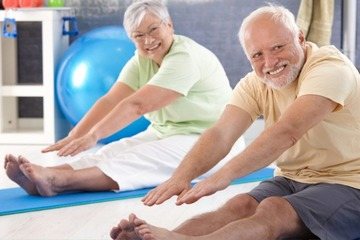
Such passive exercises for hand rehabilitation help improve blood flow in the limb and prevent stiffness in the joints. But, in addition to passive movements, active actions are required to develop the hand. In addition to physical therapy, patients at home are recommended to perform the following actions with their sore arm:
- Open and close doors with turning handles. This is a good exercise for the hand, strengthening the muscles and restoring fine motor skills.
- Turn the key in the keyhole. This movement is good for the fingers: it increases strength and coordination.
- Take objects with your hand (choose unbreakable ones) and carry them around the room.
It is recommended to do active exercise therapy for the arm during the day, performing the usual actions not with the healthy, but with the affected limb.
In addition to increasing muscle strength, it is necessary to restore fine motor skills, returning the fingers to the ability to perform precise movements. Doctors advise drawing, knitting and other precise work. When choosing the area of training for fine motor skills, you should take into account not only the capabilities of the limb, but also the personal preferences of the patient. When a person enjoys an activity, the recovery process will be successful.
Exercise therapy for ischemic stroke and hemorrhages in brain tissue are carried out in the same way. There is only one rule to remember: physical activity after a stroke increases gradually: patients should not overwork themselves while performing therapeutic exercises.
Breathing exercises are carried out depending on the person’s capabilities after a stroke:
- The strength of mobility on the right is impaired. At home, exercises are recommended for stroke on the right side, when movements of the affected limbs are done with outside help or using a healthy left hand. Gymnastics should be accompanied by measured deep breathing.
- Paresis on the left. Gymnastics for a stroke on the left side is carried out similarly to the previous option, but the person helps with the movements with the right hand. You should breathe deeply and evenly.
- Paralysis. If one or both sides of the body are completely paralyzed, then at home the recommended exercises for recovery are performed by relatives, making movements with the patient’s limbs. During the procedure, the paralyzed person is asked to take deep and even breaths.
Breathing will allow you to better saturate the blood with oxygen and reduce tissue hypoxia, and this will have a beneficial effect on subsequent rehabilitation.
In addition to exercise, to improve respiratory function, stroke patients at home are recommended to inflate balloons and perform other actions that are accompanied by increased lung function.
Active physical activity
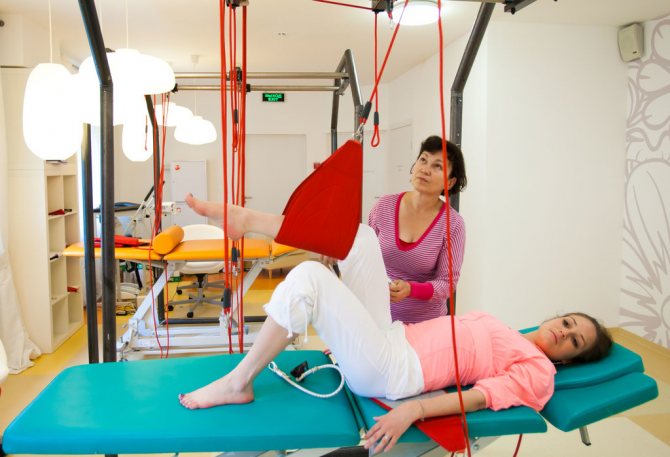
Stable positive dynamics are ensured by the practice of performing special movements prescribed by a professional with a medical education. Exercise therapy for stroke is a set of exercises that includes external influence, independent activity, and activation of mental memory.
The program includes 2 stages:
- static. The phase is aimed at restoring muscle memory and impulses sent by their brain;
- dynamic. Movements with increasing load help restore lost reflexes and create new neural connections.
The successful dynamics of performing exercise therapy is the patient’s independent performance of the prescribed exercises with a load or with resistance.
In difficult cases, when the patient is diagnosed with partial or complete paralysis, classes on the development of fine motor skills are included. The complexity of the exercises depends on the severity of the pathology and motor dysfunction. For example, with a paralyzed right side and dysfunction of hand movements, first the limb is affected passively, then they are given the task of moving small objects, turning over paper, collecting small parts, handwriting, and drawing simple figures.
Exercises while lying down
Rehabilitation gymnastics after a stroke is an effective set of exercises that restore lost reflexes and skills. For bedridden patients and patients who have just suffered a stroke, a program of exercises from a supine position is prescribed as the first stage of rehabilitation.
A set of exercises after a stroke begins when the patient is in a horizontal position. Provide a level surface. When performing lateral manipulations, turn the patient over to the healthy side. Do the following activities:
- Stand at the foot of the bed or couch with your palms around each leg and around the ankle. Gently bend your limbs one by one with your feet sliding along a horizontal surface, imitating walking. If the patient has paralysis, perform the effects alternately - move, bend your leg at the knee and smoothly lower it, first from the right side and then from the left. You can help with your hand under the knee bend when moving the foot to the pelvis and by pressing on the kneecap when returning to the starting position;
- pelvic lift. Place your bent legs on your heels and place your palm under your lower back. Ask the patient to lift the pelvic area, help him;
- rotate your hand in all joints. Start from the shoulder, move to the elbow, then the wrist;
- ask the patient to tense his lips, stretching them out with a tube, imitate a cough, yawn, and draw out vowel sounds. These manipulations normalize the swallowing reflex.
Important! According to WHO, timely and regular practice of exercise therapy ensures independence in everyday life 3 months after the onset of the disease for at least 70% of patients who have suffered stroke.
In a supine position, it is important to prevent bedsores if the patient cannot roll over independently. Regularly change the position of his body, do not let him fall on the affected side, watch the bed.
Complexes from a sitting position
Rehabilitation exercises after a stroke from a sitting position are aimed at restoring coordination and training the back. Secure the patient on the paralyzed side to prevent him from falling over.
Do the following exercises:
- swing. Gently rock the seated patient, ask him to maintain balance and resist;
- walking while sitting. Support the patient with your healthy arm on the bed, carefully lift and lower the affected lower limb, bent at the knee joint;
- bending forward and backward. The patient, independently or with the help of an instructor, rests on the bed and moves the body forward and backward. Place a pillow behind;
- abduction and extension of arms and shoulder blades. Bring your arms straight out to the sides. Move your shoulder blades towards each other and back.
Change your position from lying to sitting regularly. The more independent activity the patient has, the sooner health will return.
Complexes from a standing position
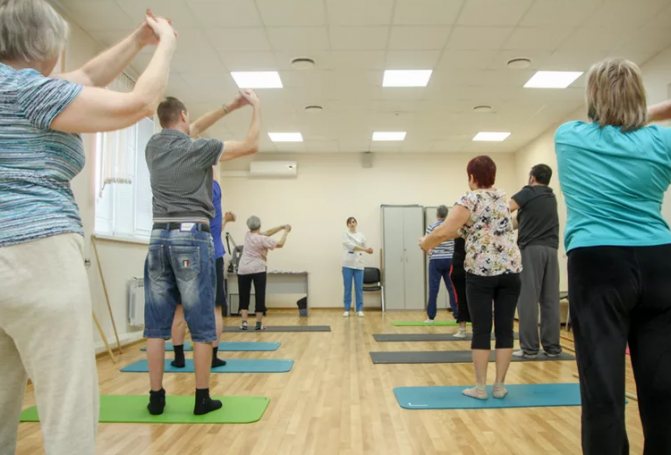
When blood pressure, well-being, and the ability to sit and lay down independently are normalized, physical therapy after a stroke is done from a standing position. At first, when performing the exercises, it is necessary that an instructor or relative be nearby. When training on your own, do the complex next to a support.
Perform the following movements:
- turns. Standing with your feet shoulder-width apart, turn your torso in different directions;
- arm lifts and rotations. From a stable standing position, raise and lower your upper limbs, twist them, rotating at the shoulder, elbow, and wrist joints. Perform movements in different directions;
- rolling from heel to toe. Carefully roll on your feet, rising on your toes, and lower yourself onto your heels, pulling your toes towards you;
- stretching. Raise your arms up, stretch as high as possible for 5-10 seconds and return to the starting position.
After standing up on your own, begin to move slowly, taking careful steps. First, walk in place, then move, gradually increasing the distance. Use the back of a chair or a special walker for support.
Eye complex
Exercises for recovery after a stroke include rehabilitation training for the ocular apparatus. You can train your eyes in bed, from a sitting position. These tasks can be used as gymnastics for bedridden patients.
You can restore visual and motor function with the following activities:
- close your eyes tightly for 5-10 seconds;
- roll your eyes, looking around in a circle. Perform in different directions;
- close your eyes and rotate your eyeballs in a circle in both directions;
- focus your gaze on close and distant objects;
- blink rapidly.
Perform each exercise 15-20 times. Do 2-3 approaches every day. Don't strain your eyes by reading, watching TV, or working on the computer.
Hand loads
Impact on an insensitive or paralyzed limb is necessary to stimulate a response. When tense, muscle receptors send a signal to the brain, which reacts with a response.
The principles of working on paralyzed limbs of the upper girdle are to first act on large articular joints and muscles, with the transition to small ones. Move from the center to the periphery, develop your arm along the chain shoulder-elbow-wrist joint-fingers. The patient should lie on his back. Ask him to close his eyes and exhale as he moves his arms up, and inhale as he moves his arms down. Perform the following exercises for 10-15 repetitions:
- amplitude development of the shoulder. Take the immobilized limb, slightly bent at the elbow, by the palm of your hand so that your thumb connects to your hand, as if you are measuring strength. With your other palm, straighten your elbow joint and support it in this position. Slowly raise the patient's arm through a full range of motion from the hip and up behind the head;
- abduction of the arm at the shoulder joint. As the patient exhales, abduct the straightened limb, holding it by his palm with one hand and supporting the shoulder joint with the other. Make sure that this is a horizontal movement parallel to the body. Do not allow deviation below body level to prevent dislocation. Raise your affected arm to shoulder level;
- development of the elbow joint by flexion. Place a cushion under your elbow, take the patient’s hand as if you were greeting him, fix the wrist, bend your arm at a right angle. Flex to the shoulder and extend to the hip. When bending - exhale, when straightening - inhale;
- pronation and supination of the elbow. Place a roller under the elbow joint, hold the palm of your hand in your hand, turn the bent arm outward as you exhale and return it inward as you inhale;
- raising the arm bent at the elbow upward. Grab the patient’s wrist, support his elbow, gently lift the limb upward as you inhale and return it back as you exhale;
- circular movements of the bent arm. Grab the patient's hand, hold it tightly in your palm, and support the elbow with the other hand. Slowly move the limb to the side and make circular movements up to the head and in the other direction;
- development of the wrist joint. Take the patient's hand as if you were shaking hands. With your other hand, support the radius from below. Gently bend and straighten your wrist up and down, then left and right, ending with circular movements clockwise and back;
- development of the wrist of the arm bent at the elbow. Place the patient’s limb bent at a right angle on a folded towel, grab the hand, move it out and in, make circular movements in different directions, turn your palm;
- working with fingers. Place a roller under your hand so that your palm is relaxed. Fix the wrist joint with one hand, bend and straighten each finger, make circular movements, lift up and return to its original position, massage with screw movements from the base to the nail;
- finger stretching. Squeeze your wrist with one hand, and with the other, lift all your fingers up to a right angle and return to the starting position.
On a note! With regular therapeutic exercises, motor functions of the lower limb are restored earlier than the upper limb.
Gradually make the exercises more difficult. As the patient responds positively, ask the patient to make efforts to resist. For example, if you move his arm straight up, he should resist this by tensing his muscles.
Leg loads
Perform a complex of exercise therapy for stroke for the lower extremities, moving from the hip joint to the feet. Place the patient on a flat surface and provide loose clothing. Repeat each exercise 10-15 times.
Active-passive exercises for legs after a stroke:
- rises. Take your foot under your heel, hold your knee, slowly lift the straightened limb up while exhaling to an angle of 45 degrees, and lower it back while inhaling;
- bends to the sides. Hold your foot by the heel, fix your knee, carefully move the limb to a distance of 40-50 cm, return to the starting position;
- lifting with a bend in the knee joint. Hold the heel, support the limb under the knee, lift, bend and straighten the leg;
- knee abduction. Place your legs bent with your heels resting. The feet should touch each other. Abduct and move the sore knee to the side. Fix the other knee joint;
- ankle development. Place a rolled towel or cushion under your shin so that your foot hangs freely in the air. Secure the area above the foot with one hand and grab the foot with the other. Bend up and down, make circular movements, turn out and return to place;
- finger work. Bend and straighten your fingers, massage in circular movements.
Perform all movements at a slow pace, watch the patient’s breathing and facial expressions. Avoid pain.
Articulation complex

When rehabilitating after a stroke, not only physical exercise is important, but also working on the facial muscles. If you have facial paralysis, do the following exercises to restore articulation:
- make a face;
- stretch out your lips, depicting an “o”;
- blow through your curled lips;
- stretch your tongue as far as possible;
- push your jaw forward;
- alternately pinch your lower and upper lips.
If possible, read aloud, memorize small rhymes, poems, sing. Practice working your facial muscles as often as possible.
Breathing exercises
For rehabilitation after a stroke, it is important to maintain proper breathing. When performing exercises, perform all movements associated with effort and muscle tension while exhaling. This will reduce tone and eliminate spasm.
Breathing exercises are performed immediately after the condition has stabilized:
- take deep breaths through your nose and exhale deeply through your open mouth;
- inhale lungs full of air, hold your breath for 5-10 seconds, slowly exhale the entire volume;
- inhale in several stages and exhale in several exhalations.
Perform each exercise 10-12 times. Ventilate the room before gymnastics. After returning to motor functions, perform breathing exercises daily. Monitor your well-being during classes. If you experience dizziness, blurred vision, or loss of consciousness, stop practicing.
Independent gymnastics after a stroke

A patient with partial paralysis can independently perform rehabilitation exercises after a stroke. If he feels well enough, he can regularly do various exercises and movements to help his body recover and prevent the formation of bedsores.
Provide a flat surface for practicing - a couch or a hard mattress. A patient after a stroke with a paralyzed right or left side and dysfunction of limb mobility can engage in exercise therapy at home according to the following algorithm:
- lying on your back, take the sore hand with your healthy hand and cross your fingers on your stomach, forcefully lift both limbs up in front of you while inhaling, while exhaling, move them behind your head, then inhale and slowly return your arms to their original position;
- from a lying position with your hands clasped in your hands, draw circles clockwise and counterclockwise;
- lying on your back or on your sore side, bend and straighten your clasped arms at the elbows up and down. Elbows lie on the couch;
- developing the wrists with hands clenched into a lock, up and down, in a circle in different directions;
- turn your palms with closed fingers down towards your hips and return them back, then lift them above you in the same way, straightening your arms at the elbows;
- pull your ankles towards your pelvis and return them to their place. Help with your healthy foot by grabbing the immobilized foot from below;
- Turn over in bed on your sore side and return to your place. Place your healthy hand on your stomach. Place your functioning leg on the knee joint and rotate your torso;
- sit down and lie down. Push with your healthy leg, turn on your side, lower your limbs down, rest your functioning arm underneath you, lift your torso;
- raise and lower your pelvis, resting on your heels with bent legs;
- from a sitting position, move the patient to the side with your healthy arm and place it bent on your thigh;
- imitate walking while sitting. Alternately raise the limbs bent at the knees;
- raising bent legs from a sitting position. Place both hands on the bed, lift your lower limbs together;
- do Kegel exercises. Tighten your pelvic muscles for a few seconds and relax them. Gymnastics will strengthen the muscle corset and eliminate urinary incontinence.
Important! Start recovery activities 3-4 days after your stroke. The sooner you start exercise therapy, the faster you will get a positive effect.
Independent exercises are an important part of rehabilitation exercises. Whenever possible, train your eyes, facial expressions, and do breathing exercises.
Breathing exercises after a stroke
Breathing exercises are recommended to be performed while still in the hospital. The patient should take deep breaths throughout the day and do them as often as possible. It is allowed to alternate between chest and abdominal breathing. When the doctor allows you to sit, you should not bend your back so that the inhaled air straightens the lungs as much as possible. At home, you can perform the following breathing exercises to recover from a stroke:
- Slowly inhale deeply, hold your breath for a few seconds, and then gradually exhale. Repeat 8-10 times, perform 3-4 approaches.
- Inflate the balloon several times. Perform the exercise 3-4 times a day.
- Place a straw in a cup of water. Take a few exhalations through it so that the liquid gurgles.
